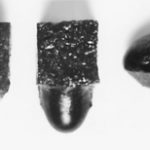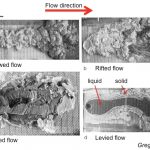There have been many attempts to conduct experiments with real lava and with analog materials. Probably the first was James Hall who melted basaltic (“trap rock”) with a blacksmith’s forge in ~1800. He did a number of experiments very similar to those of the early days of the Lava Project. In order to investigate the physical properties and petrology of lava small amounts of molten material is produced under controlled conditions in experimental laboratories. In order to better understand flow dynamics, scalable experiments are also commonly conducted using viscous analog materials such as Polyethylene Glycol (PEG) wax. All of these important approaches to understanding lava flow, but there is no substitute for experiments with real lava under conditions that closely match those of natural flows.



